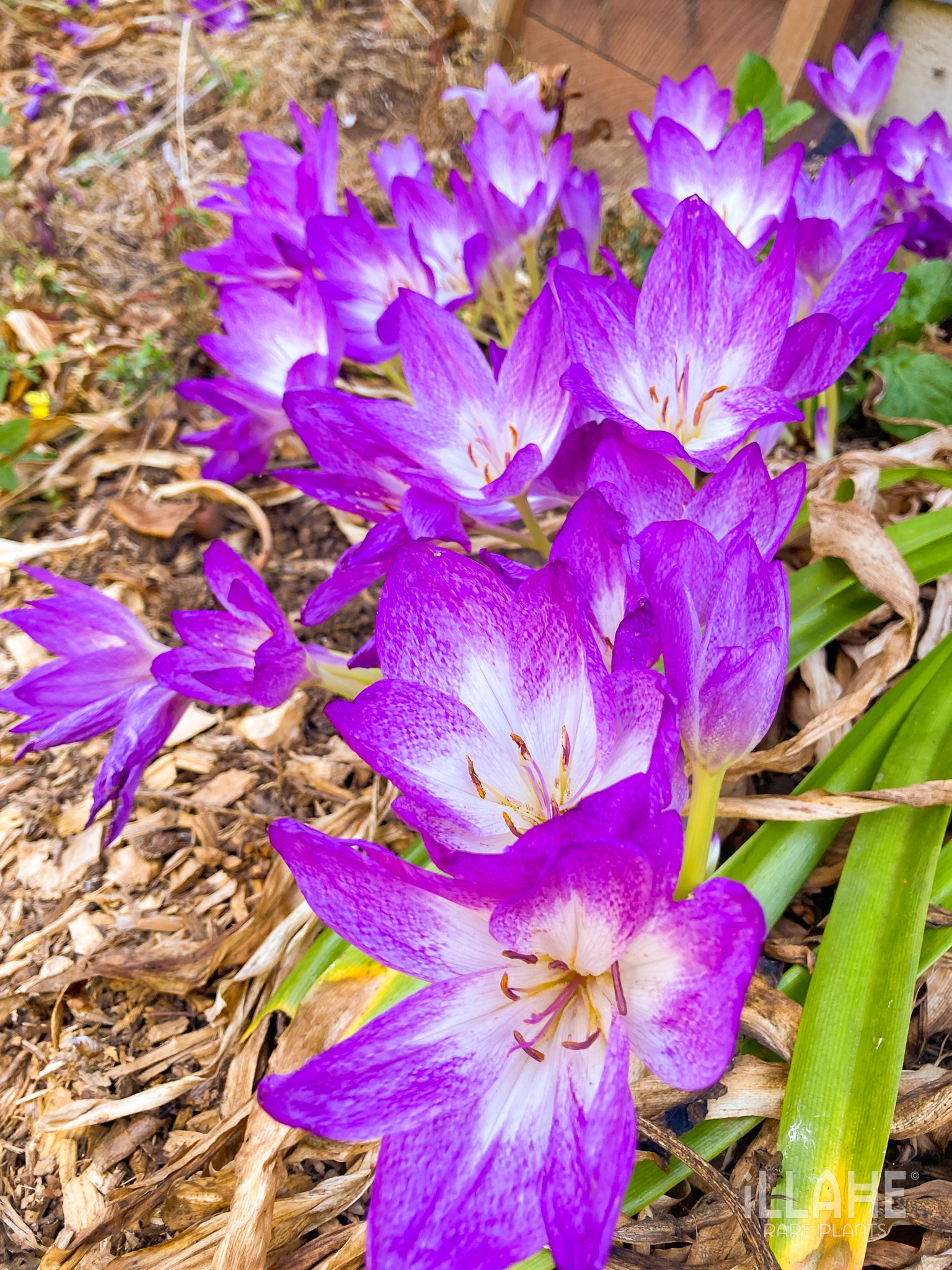
Colchicum 'Zephyr'
Large goblets of lavender pink flowers in the fall when everything else is going to bed for the winter. Plan for for the large, almost tropical foliage when planting them
Colchicums, or autumn crocuses, are well-adapted to climate change due to several key features that enhance their resilience in changing environmental conditions. Their unique seasonal growth cycle, with flowering occurring in the fall and dormancy during the hotter summer months, allows them to avoid the most extreme temperatures and drought conditions associated with climate change. The plants grow from corms, which are bulb-like structures that store nutrients and water, enabling them to endure periods of dryness and re-emerge during more favorable conditions.
Additionally, colchicums possess relatively deep root systems, which help them access moisture from deeper soil layers, providing a buffer against surface-level drought. Their ability to thrive in a variety of habitats—from meadows to forest floors—demonstrates their adaptability to different environmental conditions. They also produce colchicine, a toxic compound that naturally deters many pests and diseases, offering an advantage as changing climates might increase the prevalence of such threats.
Colchicums’ blooming in cooler fall temperatures provides an edge as global temperatures rise and seasonal patterns shift. Furthermore, the high genetic diversity within colchicum species equips them with a range of traits that might be more resilient to specific climate stressors. Collectively, these adaptations enable colchicums to survive and even thrive amid the uncertainties of climate change
Large goblets of lavender pink flowers in the fall when everything else is going to bed for the winter. Plan for for the large, almost tropical foliage when planting them
Colchicums, or autumn crocuses, are well-adapted to climate change due to several key features that enhance their resilience in changing environmental conditions. Their unique seasonal growth cycle, with flowering occurring in the fall and dormancy during the hotter summer months, allows them to avoid the most extreme temperatures and drought conditions associated with climate change. The plants grow from corms, which are bulb-like structures that store nutrients and water, enabling them to endure periods of dryness and re-emerge during more favorable conditions.
Additionally, colchicums possess relatively deep root systems, which help them access moisture from deeper soil layers, providing a buffer against surface-level drought. Their ability to thrive in a variety of habitats—from meadows to forest floors—demonstrates their adaptability to different environmental conditions. They also produce colchicine, a toxic compound that naturally deters many pests and diseases, offering an advantage as changing climates might increase the prevalence of such threats.
Colchicums’ blooming in cooler fall temperatures provides an edge as global temperatures rise and seasonal patterns shift. Furthermore, the high genetic diversity within colchicum species equips them with a range of traits that might be more resilient to specific climate stressors. Collectively, these adaptations enable colchicums to survive and even thrive amid the uncertainties of climate change












